1940s
An Obvious Case of Entrapment
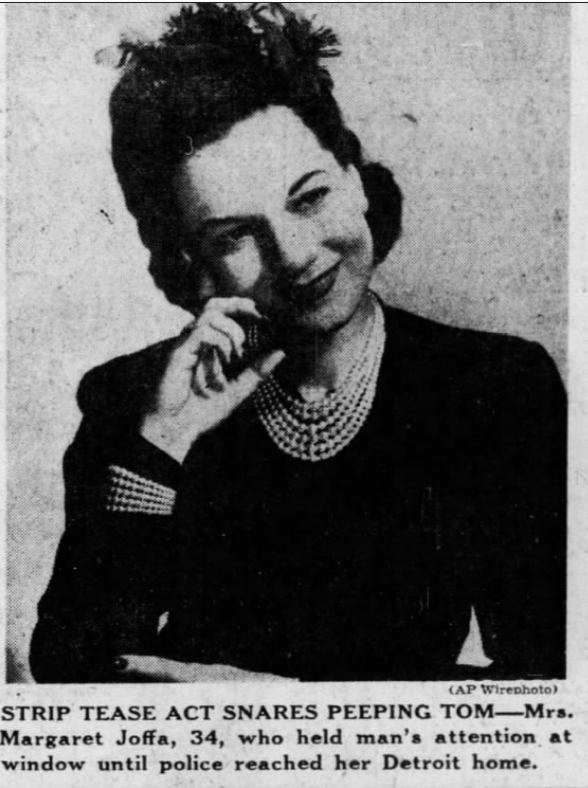
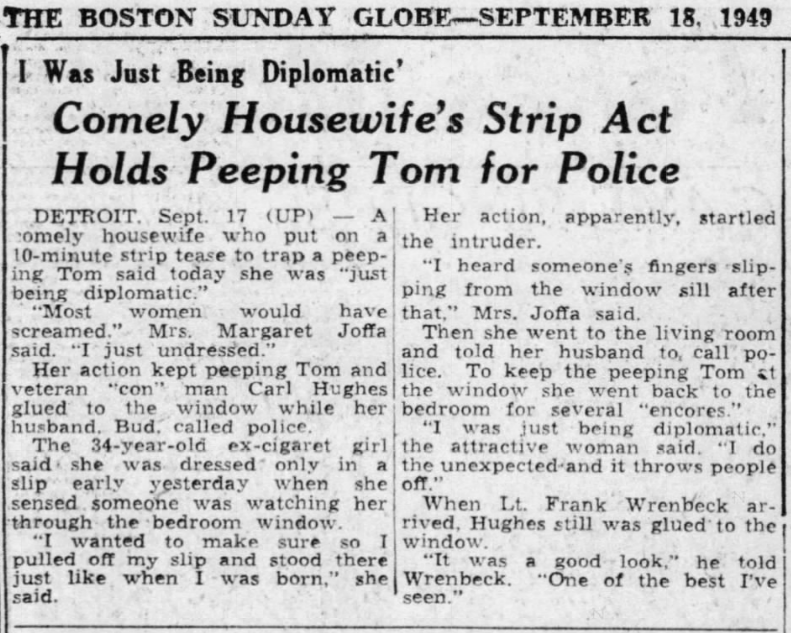
Posted By: Paul - Wed Apr 07, 2021 -
Comments (2)
Category: Domestic, Burlesque, Exotic Dancing, Stripping and Other Forms of Staged Nakedness, Stupid Criminals, 1940s
Fire-Breathing Woman
In April 1940, Linda Lancaster Dodge Stratton was granted a patent for the "cigar or cigarette lighter" shown below. Its novel feature was that it was shaped like a fire-breathing woman. Or, as Stratton put it, "in the shape of a human figure artistically posed with the igniting means located in the mouth and ignited and extinguished by the movement of the head to open and close the mouth thereof through the manual movement of the arms toward and from the mouth."It kinda looks like a fire-breathing Barbie. Though it predates Barbie by almost 20 years.
The patent said this woman was to be "constructed in a pocket or a table size." It would definitely be a conversation piece to have a table-size version of her in your home.


Posted By: Alex - Sun Apr 04, 2021 -
Comments (4)
Category: Inventions, Patents, Smoking and Tobacco, 1940s, Women
Telephone Pole Tossing
1943: St. Louis University introduced a Phys Ed course in "telephone pole tossing".
St. Louis Post-Dispatch - Apr 23, 1943
A whole bunch of images of SLU students lifting and tossing poles are archived at the Google Arts and Culture site:



Posted By: Alex - Tue Mar 23, 2021 -
Comments (0)
Category: Exercise and Fitness, 1940s
The Mechanized Restaurant
British inventor Thomas Maldwyn Lewis and his partners apparently had some expertise in conveyor-belt technology. So they cast about for novel ways to apply this knowledge. What they came up with was the "mechanized restaurant". Their idea was to put diners on a conveyor belt and move them past serving stations. From their 1948 patent:

The inventors argued that this mechanization of the dining experience would "expedite the delivery of meals and enable more meals to be served with the use of a given floor area than is at present possible."
That may be true, but I doubt many restaurant owners would want to invest the money to build one of these, just for the sake of potentially serving a few more meals.
Not to mention the problem of slow eaters. I'm imagining a crowd of diners standing at the end of the conveyor belt, plates in hand, trying to finish their meals.
Posted By: Alex - Sun Feb 21, 2021 -
Comments (2)
Category: Restaurants, Technology, Patents, 1940s
Recipes for Cooking Domestic Rabbit Meat
During World War II, as the country faced meat rationing, the U.S. Government decided to promote rabbit meat as an alternative to beef and chicken. As part of this effort, the Department of the Interior released a pamphlet, "Recipes for Cooking Domestic Rabbit Meat". It included recipes such as "Rabbit Chop Suey," "Vagabond Stew," and "Wartime Rabbit Casserole". The pamphlet noted:
Entrepreneur Martin French of Los Angeles must have had visions of the rabbit-meat market taking off. In 1940, he received trademark protection for "Bunnyburger" — his ground rabbit meat business.

I'd like to think that, in some alternative reality, the government's plan worked and it's possible to go into a McDonald's and order a McBunny with Cheese.
Posted By: Alex - Thu Feb 18, 2021 -
Comments (8)
Category: Food, Cookbooks, 1940s
Operation Cornflakes
1945: Toward the end of World War II, the American OSS cooked up a scheme to use postage stamps to demoralize the German people. The idea was to create fake 12 Pfennig stamps on which Hitler's profile was replaced by an image of Hitler with his jaw eaten away.The Operation had no discernible effect on German morale. But it's a favorite topic among stamp collectors, who are flattered to think that anyone in the OSS ever imagined that stamps might have had such an effect.
More info: wikipedia

Posted By: Alex - Wed Feb 10, 2021 -
Comments (1)
Category: War, Spies and Intelligence Services, 1940s, Stamps
Follies of the Madmen #499
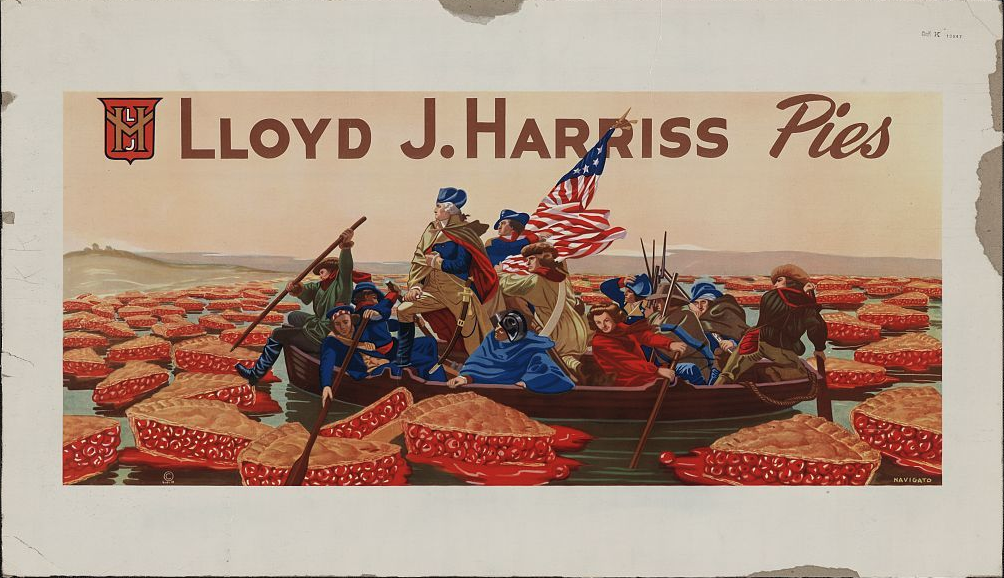
Source.
Posted By: Paul - Wed Feb 10, 2021 -
Comments (1)
Category: Business, Advertising, Food, History, Historical Figure, 1940s
Groundhog Detector
Feb 1947: the residents of Quarryville, Pennsylvania used strange, new technology in an attempt to detect and communicate with groundhogs.
Chairman of the Hibernating Groundhog Lodge in Quarryville, Pa. calibrates the "ultra-secret invention" that will be used to contact "10,672 registered groundhogs in Lancaster County" on Groundhog Day.
image source: Temple University Library

Louisville Courier-Journal - Feb 2, 1947

Brooklyn Daily Eagle - Feb 2, 1947
Posted By: Alex - Tue Feb 02, 2021 -
Comments (2)
Category: Holidays, Inventions, 1940s
Use your children as dumbbells
Harold J. Reilly, owner of a New York gym during the 1930s and 40s, promoted the idea of using children as exercise equipment. Pick them up and swing them around, he urged parents, as one would a dumbbell or kettlebell.The advantage of using kids as dumbbells, he pointed out, was that as they grow older their weight will increase, thereby naturally helping the parents to develop their strength.
It's an intriguing idea, although a set of dumbbells is a lot cheaper than having children. And won't break if you drop them.

Minneapolis Star - May 31, 1942

"Reilly recommends that parents (or grandparents) work out by swinging their youngsters around from childhood. Says it helps both out."
NY Daily News - May 2, 1948
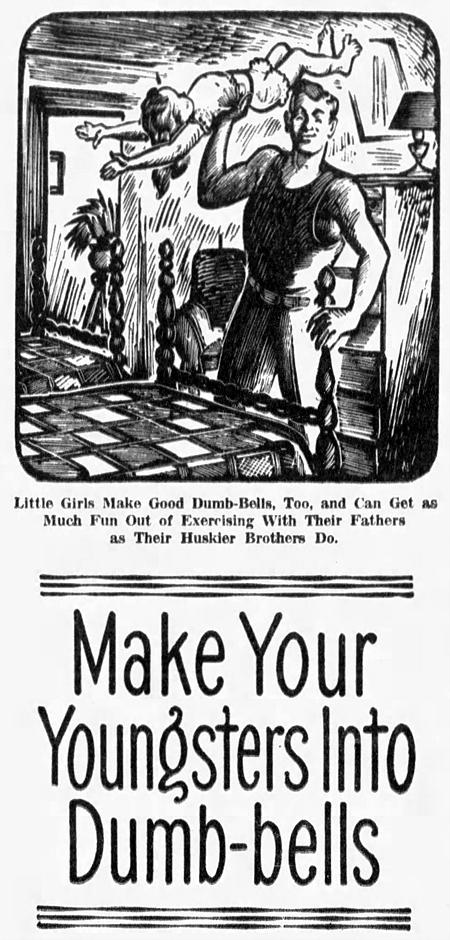
Pittsburgh Sun-Telegraph - Aug 3, 1941
Some years ago Mr. Reilly was thumbing through a volume of Greek mythology when he read how Hercules, as a boy, started lifting a small calf every day. As the calf grew, so did Hercules' strength so that when it became a full-grown bull Hercules could still lift it.
Mr. Reilly thought that the story could be given a modern twist and proceeded to do so. He became "Hercules" and his infant son and daughter the small "calves."...
For years he carried out this theory conscientiously with his own children and it worked so well that it prompted him to write a recent book about physical culture in which he advocates that both fathers and children will benefit greatly if the former raise the latter as dumb-bells.
"I'm not suggesting that you bring a bull calf into the house and go to work on it. After all you're not Hercules," Mr. Reilly points out in "The Secret of Better Health," published by Carlyle House, "But you can work out the same idea by starting to exercise with your pride and joy when he's only a year old, and keeping it up until he's ten, 15 or even 20. The child will benefit, and so will you...
"You may start when your child is an infant," says Mr. Reilly. "But as babies are delicate, don't begin by wrestling with him. Just manipulate the baby's arms and legs. Wiggle them around, being careful not to twist harshly... Then as the child begins to walk, you can swing him by the arms."...
"From three to six, you can become a little more strenuous. Pick the child up and swing him around, holding him by the arms. Let him lie on his back and take his two hands in one of yours and his ankles in the other and swing him around that way, back and forth, sideways and between your legs as though he were a medicine ball...
Mr. Reilly says that the swinging-around game should be kept up during the six-to-nine period of the child's age. In addition he should be picked up by the ankles and walked around, wheelbarrow fashion...
"From nine to 15 keep up the same exercises, if you can, and begin to box and wrestle with him," says Mr. Reilly. "It is just as easy with a daughter, for a little girl is a natural tomboy. She doesn't begin to be a female until around 12 years when adolescence sets in. Then a certain amount of care is necessary. But until then, treat your daughter the same as your son."
Update: Found a video of a guy using his kids as weights.
Posted By: Alex - Tue Jan 26, 2021 -
Comments (4)
Category: Babies, Exercise and Fitness, Babies and Toddlers, Children, 1940s
Follies of the Madmen #497
You'll be able to administer all the spankings you desire, if you buy our shirts!Source.
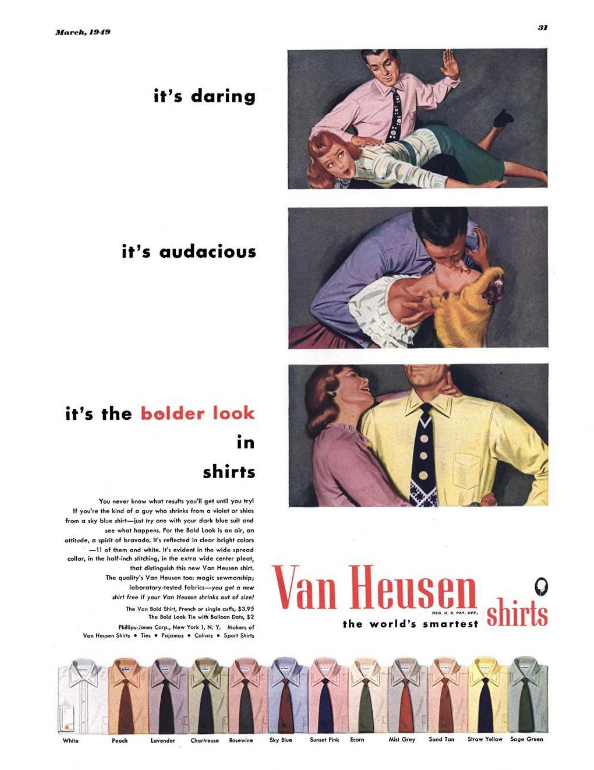
Posted By: Paul - Mon Jan 18, 2021 -
Comments (3)
Category: Antisocial Activities, Fashion, Public Humiliation, Fetishes, 1940s, Men, Women

| Who We Are |
|---|
| Alex Boese Alex is the creator and curator of the Museum of Hoaxes. He's also the author of various weird, non-fiction, science-themed books such as Elephants on Acid and Psychedelic Apes. Paul Di Filippo Paul has been paid to put weird ideas into fictional form for over thirty years, in his career as a noted science fiction writer. He has recently begun blogging on many curious topics with three fellow writers at The Inferior 4+1. Contact Us |




